Fondation Cartier pour l’Art Contemporain Opens Its Doors in Paris
Starting October 24, 2025, the renowned institution welcomes the public to its new address at 2 Place du Palais-Royal, Paris 1st, directly across from the Louvre.
Fashion Press Corner / Cartier
10/10/2025
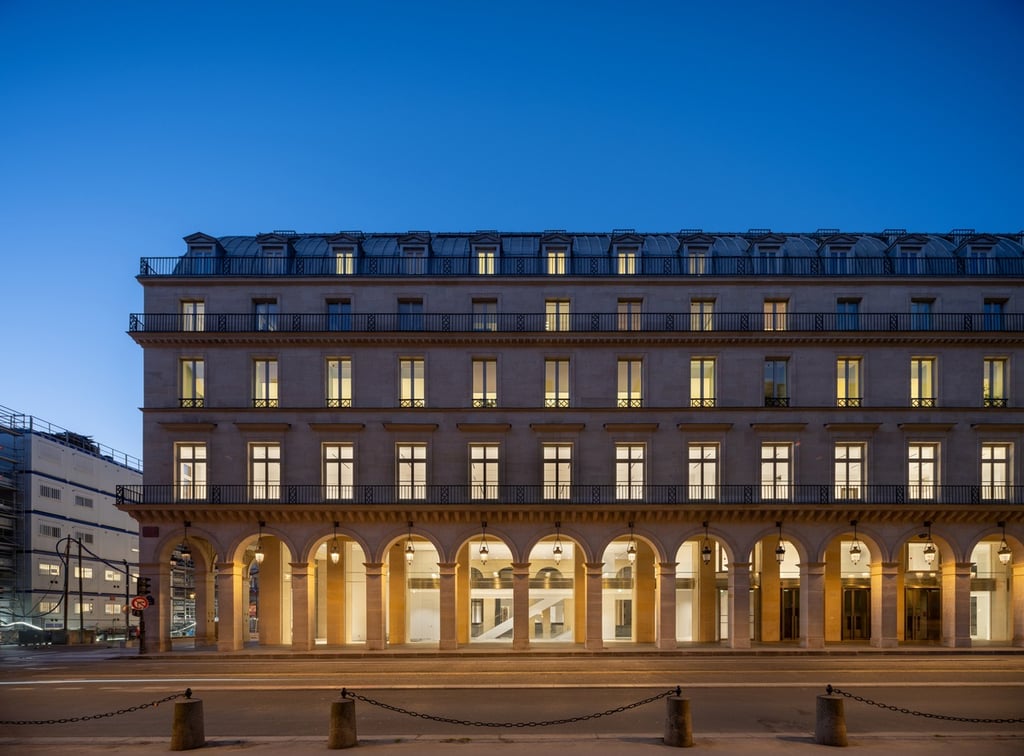

The historic 1855 building has been radically transformed by acclaimed architect Jean Nouvel. It features 8,500 square meters of public space, including 6,500 square meters dedicated to exhibitions—a dynamic venue with five adjustable platforms, offering innovative formats for visual art, photography, performance, film, and craftsmanship.
A Belvedere for the Arts
T he Fondation Cartier pour l’art contemporain is a space for artistic dialogue and experimentation that places the relationship between creation and exhibition at the heart of its institutional project, working in close collaboration with artists. Since its creation in 1984 by Alain Dominique Perrin, then-President of Maison Cartier, it has exhibited artists from all walks of life, breaking down barriers between practices and fields of thought. Built over the years through a groundbreaking international programme, the Fondation’s collection reflects its multidisciplinary nature and the breadth of themes addressed in direct connection with contemporary issues.
The Fondation Cartier carries out its activities and commitments with the ambition of making contemporary creation accessible to as many people as possible. Through exhibition projects and a programme of encounters and debates, performances, and lectures, it creates bridges between places of creation and fosters a genuine space for multicultural dialogue.
In Paris, in October 2025, the Fondation Cartier is opening its new site at 2 Place du Palais-Royal, in the heart of the capital, right across from the Louvre. Housed in a Haussmannian building dating from 1855, the interior has been entirely reimagined by architect Jean Nouvel. The dynamic architecture consists of f ive platforms adjustable to eleven different heights, allowing for numerous combinations of volumes, verticalities, and modulations of light, multiplying the possibilities for programming. With 8,500 square meters of space accessible to the public, including 6,500 square meters of exhibition space, the architecture acts as a scenographic device serving a wide spectrum of visual arts, photography, film, craft, performance, live shows, and science. More than just scenographic propositions, these spaces explore their social potential as places for exchange and sharing. In keeping with contemporary issues related to landscape, urbanism, and ecology, the Fondation Cartier will be an actor in its neighborhood and city, with its very architecture imbued with the history and context of Paris.
This architectural project is a manifesto of Jean Nouvel’s contextualist approach, his reflection on exhibition spaces and their place in the city. The large bay windows on the ground-floor set an immediate dialogue with Paris, while the arcades, designed along the Rue de Rivoli by architects Charles Percier and Pierre Fontaine under Napoleon I, anchor the building in the district’s architectural harmony. In line with the Fondation Cartier’s ongoing reflection on exhibition design since its creation, the aim is also to create innovative formats that respond to the challenges and missions of a cultural institution rooted in the 21st century. New types of group exhibitions will take advantage of the building’s architectural possibilities to create visual connections and pathways that cannot be created elsewhere. Each artistic project will offer a renewed experience of the building, placing it at the heart of the curatorial reflection.
The audience policy has been reinforced as a result, with an ambitious offer that sits in line with the programming. In addition to a redesigned and enriched cultural mediation programme, the Fondation has created La Manufacture, a 300-square-meter space for education about art and through art, for all ages and profiles. It places the intelligence of the hand at the heart of its approach, drawing inspiration from traditions of transmission through gesture as a pedagogical basis for its workshops, educational projects and creative programme series.
Two other spaces enrich a contemporary artistic programme open to the polyphony of 21st century modes of expression: an auditorium where performances, concerts, and shows will be presented, alongside a rich program of encounters and debates, enabling creatives to engage in a dialogue as extension or counterpoint to the exhibitions; and a new bookstore which, alongside titles on multidisciplinary themes, will prominently feature the Fondation Cartier’s own publications and works produced in close collaboration with the artists.
To mark the inauguration of this new venue, the Fondation Cartier is presenting Exposition Générale, a selection of iconic works and fragments of exhibitions that today constitute the main thrust of its Collection. Distinguishing itself through the unique principles guiding its development and enrichment year after year, it traces more than 40 years of international contemporary creation. With no preexisting collection, it is essentially composed of works created and presented as part of the Fondation’s rich programming, ranging from established artists to relatively unknown talents, yet to be discovered. This collection has always acted as a driving force for creation, with the Fondation Cartier enabling artists, through its commissions, to carry out projects specifically conceived for it —sometimes at odds with their preferred practices or on the occasion of first monographs. As part of Exposition Générale, live performances and spoken word events will take place alongside the Collection’s works in the exhibition spaces, with projects focusing on fashion, dance, and music.
Unleashing a world of possibilities, this new venue welcomes the public with open arms, focusing on the need to transmit, question and exchange through innovative educational programmes and shared aesthetic experiences. The Fondation Cartier is shifting in scale and reinventing itself in order to experiment and share with artists and audiences alike ever new ways of conceiving art.
Foreword
Excerpt from the publication / The Fondation Cartier pour l’art contemporain by Jean Nouvel, 2 Place du Palais-Royal, Paris
In October 2025, the Fondation Cartier pour l’art contemporain leaves its premises at 261 Boulevard Raspail and moves to the center of Paris. Its new address, 2 Place du Palais-Royal, opposite the Louvre, is a historic 1855 building whose interior volumes underwent a radical redesign by the architect Jean Nouvel. The new spaces expand upon the principles of the Raspail building the architect designed for the Fondation Cartier: made entirely of glass and steel, the transparent structure and its play with immateriality shook up exhibition practices upon opening in 1994. Today Jean Nouvel’s new architectural project continues to explore architecture’s potential to reshape the esthetics of the museum, doing so this time within a Haussmannian building that dates back to 1855, which previously housed the Grand Hôtel du Louvre (1855–1887), then the Grands Magasins du Louvre (1887–1974), and finally the Louvre des Antiquaires (1978–2019). The governing principle of the spaces is a mechanism that enables a myriad of possible transformations of the interior of the building in service to artistic intention and exhibition design. Behind the fully preserved exterior, we find a dynamic architecture composed of five mobile platforms which allow the creation of an unexpected range of volumes, voids, and spaces, firmly placing the design of the exhibition space at the heart of the institution’s artistic program.
T he dynamic architecture of the Fondation Cartier is itself inscribed in a history of architecture in which Paris has played a major role. In 1925, the International Exhibition of Modern Decorative and Industrial Arts marked the beginning of an architectural revolution. On this occasion, the modern decorative arts workshops of the booming department stores showcased presentations in which applied art and industrial production techniques converged, establishing them as key players of the architectural innovations of the time. The Studium Louvre pavilion, a shopping mall designed by French architect Albert Laprade for the Grands Magasins du Louvre, was erected alongside the international pavilions on the Esplanade des Invalides and contributed to endowing architecture with a key role in the development of the modern exhibition. Other architectural presentations also embodied this revolution which was soon to unfold, and the conflicting ideologies that would accompany them: Le Corbusier’s Pavillon de l’Esprit Nouveau, the City in Space structure designed by Frederick J. Kiesler for the Austrian section, and, above all, the Soviet pavilion by Konstantin Melnikov—a pioneering Cubist edifice—heralded the dawn of a mobile and fluid form of architecture. It was also at this same 1925 exhibition that Jean Prouvé was awarded a diploma of honor for his utilitarian, modular furniture. Later, he would join forces with architects Eugène Beaudouin and Marcel Lods, as well as engineer Vladimir Bodiansky, to design the dynamic architecture of the Maison du Peuple in Clichy (1939). With its modular floors and walls, the building was the first attempt at creating a multifunctional space, whose ambition was to offer the greatest flexibility and possibilities to its users.
Another Parisian landmark that aspired to modularity was the Centre Georges Pompidou, whose initial project, designed by Richard Rogers and Renzo Piano in 1971, featured mobile levels. Here, museum architecture was already being conceived in response to the multiplicity of uses it was intended to accommodate, some even unknown at the time. The Centre Georges Pompidou was inspired by Cedric Price’s Fun Palace, an educational and cultural complex commissioned in 1960 by theater director Joan Littlewood for London’s East End. The site was supposed to host an interactive multidisciplinary program, capable of adapting to the changing social conditions of the day. Although it was never actually built, the Fun Palace had a decisive influence on the architecture of cultural institutions, their imperatives, and objectives. In 1994, Cedric Price would write: “The 21st-century ‘culture center’ will utilize calculated uncertainty and conscious incompleteness to produce a catalyst for invigorating change, whilst always producing ‘the harvest of the quiet eye.’”
T his pursuit of modular spaces has prominently featured in projects that transformed the history of architecture: Rem Koolhaas’s Maison à Bordeaux (1994–1998) and Lafayette Anticipations (Paris, 2012–2018), as well as The Shed (New York, 2015–2019) designed by Diller Scofidio + Renfro. Highly experimental, these last two projects had to comply with the regulations that public buildings must adhere to, as well as the challenges that arise with inventing operative models to program these new types of spaces. Drawing on the lessons learned from these architectural sites, the new spaces designed by Jean Nouvel for the Fondation Cartier are in line with these efforts to design a cultural institution that is both modular and adaptable.
Beyond the dialogue on the evolution of museum spaces and what they should welcome and make possible, Jean Nouvel’s architectural project also responds to the historical urban Parisian context in which it is situated. The Grands Magasins du Louvre once played an essential role in the heart of the capital’s cultural life. Through his transformation of the site, Jean Nouvel highlights the existing architectural and urban elements that exemplify this historical modernity of the 19th century. The tall picture windows that have been added and which run along the facades make the building transparent and reveal the entirety of the interior from one end to the other, forming a visual system that reinterprets the building’s vitrines, which once allowed passersby to gaze at the wide variety of objects on display as they strolled by. The addition of a glass awning, reminiscent of the one that once ran along that same Rue Saint Honoré and Rue de Marengo, reinforces this unique urban unity and merges the experiences of the street, the historic arcades, and the interior spaces. Similarly, the addition of three glass ceilings, equipped with shutters that vary brightness levels, allows the sky and natural light to feature as an element in the exhibition spaces. The dynamic architecture is further strengthened by the porosity that exists with the exterior, profoundly affecting the visitor’s experience of the building, depending on the season or time of day it is visited. […]
The Fondation Cartier pour l’art contemporain, Photo © Martin Argyroglo
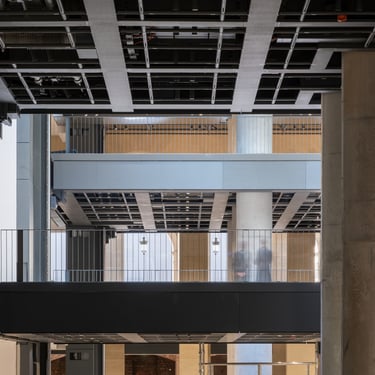
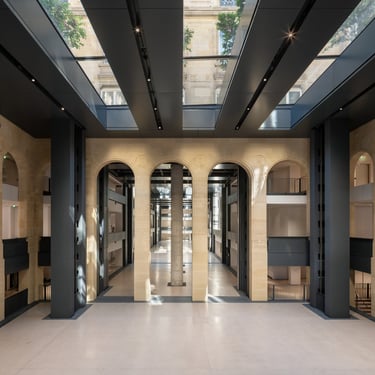
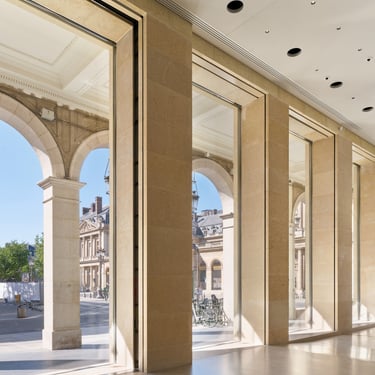
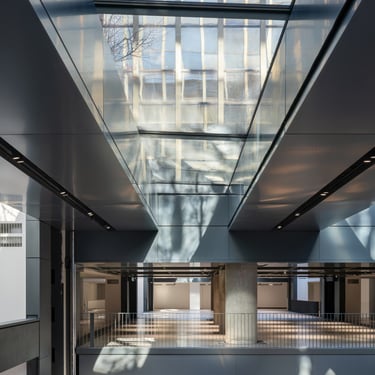
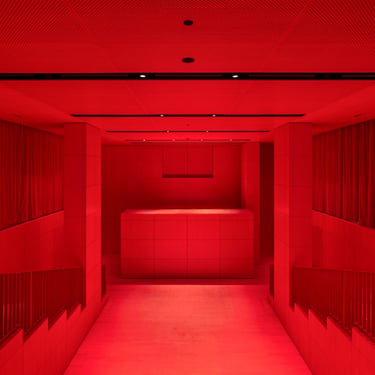
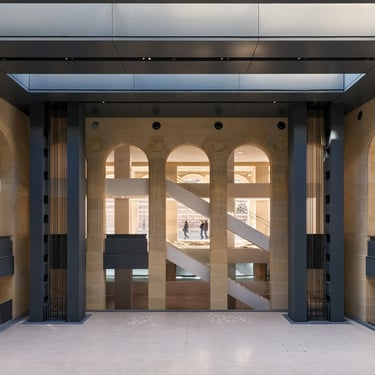
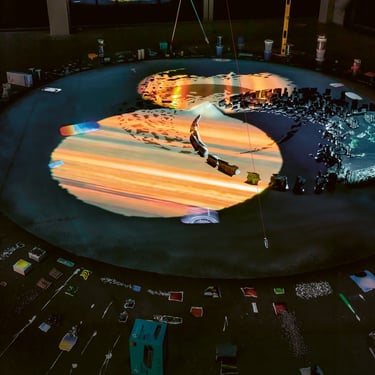
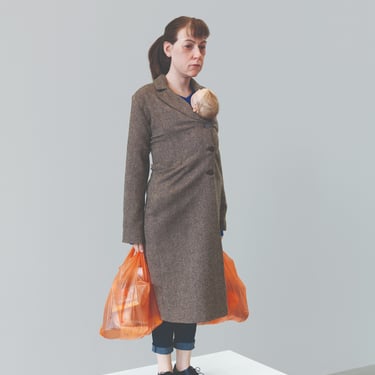
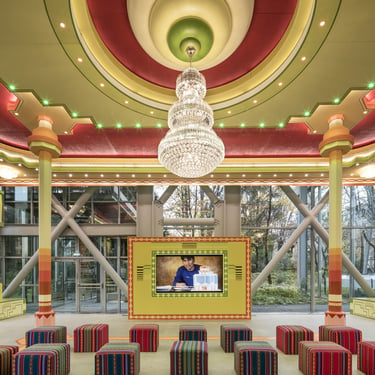
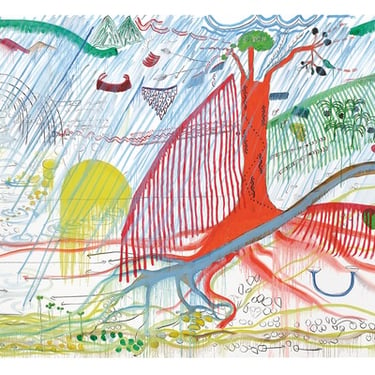

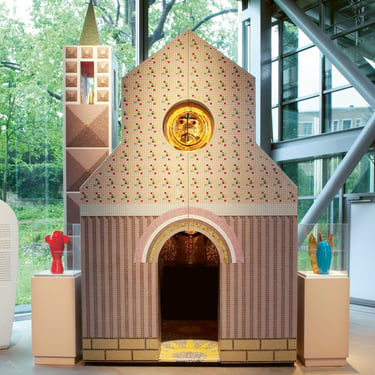
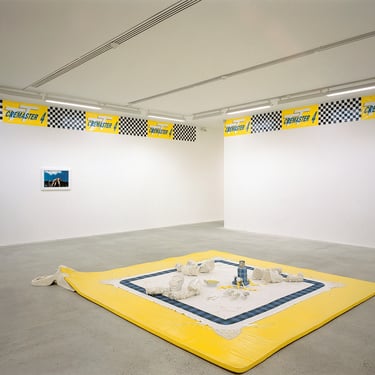
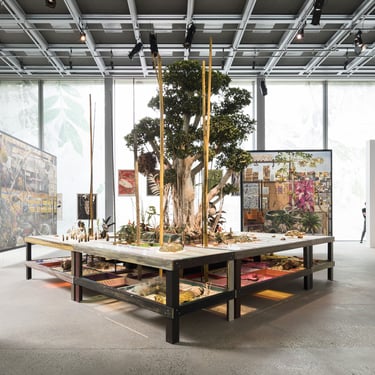
The inaugural exhibition, "Exposition Générale," will present nearly 600 iconic works from the past 40 years of international contemporary art. More than 100 artists, from renowned masters to rising talents, are represented—showcasing the diversity and vitality of the Fondation Cartier Collection. The venue will also host an array of complementary programs, including live performances, public talks, and a newly created arts education space.
1. Sarah Sze, Tracing Fallen Sky, 2020 © Luc Boegly Artiste © Sarah Sze. 2. Ron Mueck, Woman with Shopping, 2013 © Patrick Gries Artiste © Ron Mueck Adagp, Paris. 3. Freddy Mamani, Salón de eventos, 2018 © Luc Boegly Artiste © Freddy Mamani. 4. Fabrice Hyber and Sheroanawe Hakihiiwe, © Charles-Henri Paysan Lumento. 5. Chéri Samba, La vraie carte du monde, 2011, © Florian Kleinefenn Artiste © Chéri Samba. 6. Alessandro Mendini, Petite Cathédrale, 2002, © Ambroise Tézenas Artiste © Alessandro Mendini. 7. Matthew Barney, Cremaster 4 © Losi Jean-Louis Artiste © Matthew Barney. 8. Luiz Zerbini, Natureza Espiritual da Realidade, 2012 © Thibaut Voisin Artiste © Luiz Zerbini.
The Fondation Cartier pour l’art contemporain, Photo © Martin Argyroglo